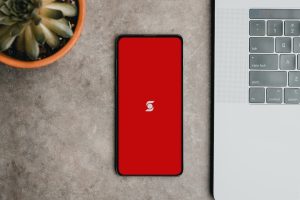Inventory retracement bars are a popular tool used by forex traders to identify potential market reversals. They are a type of candlestick chart pattern that occurs when the price of an asset moves in one direction, then suddenly retraces its movement before continuing in the original direction. In this article, we will explore the concept of inventory retracement bars in forex trading and how traders can use them to make more informed trading decisions.
Understanding Inventory Retracement Bars
Inventory retracement bars are a type of candlestick pattern that occurs when the price of an asset moves in one direction, then suddenly retraces its movement before continuing in the original direction. This pattern is characterized by a long candlestick followed by a shorter candlestick, which is referred to as the retracement bar.
The long candlestick represents the initial movement of the price in a particular direction, while the retracement bar represents a temporary reversal of that movement. The length of the retracement bar can vary, but it is typically shorter than the preceding candlestick.
Inventory retracement bars are often seen as a sign of market indecision, as traders are unsure whether to continue with the initial trend or to reverse course. This uncertainty can lead to increased volatility in the market, making it a potentially lucrative time for traders to enter or exit positions.
How to Identify Inventory Retracement Bars
To identify inventory retracement bars, traders must first understand the anatomy of a candlestick chart. A candlestick chart is a type of financial chart that displays the high, low, open, and close prices of an asset over a given period. Each candlestick represents a single period, such as a day or an hour.
The body of a candlestick represents the difference between the open and close prices, while the wicks or shadows represent the high and low prices. A bullish candlestick has a green or white body and represents a period where the price of an asset has risen, while a bearish candlestick has a red or black body and represents a period where the price of an asset has fallen.
To identify an inventory retracement bar, traders should look for a long bullish or bearish candlestick, followed by a smaller candlestick in the opposite direction. The smaller candlestick should have a body that is at least half the size of the preceding candlestick, and it should have a wick or shadow that extends beyond the previous high or low.
Trading Strategies Using Inventory Retracement Bars
There are several trading strategies that traders can use when trading inventory retracement bars. One popular strategy is to wait for the retracement bar to form and then enter a position in the direction of the preceding candlestick. For example, if the initial candlestick was bullish, traders would wait for a bearish retracement bar to form and then enter a long position.
Another strategy is to use the retracement bar as a signal to exit a position. Traders may choose to exit a position when a retracement bar forms, as it may indicate that the market is about to reverse course.
Traders can also use inventory retracement bars in conjunction with other technical indicators to confirm potential market reversals. For example, traders may look for a retracement bar to form at a key support or resistance level, or when the price of an asset reaches an overbought or oversold condition.
Conclusion
Inventory retracement bars are a valuable tool for forex traders looking to identify potential market reversals. By understanding the anatomy of a candlestick chart and how to identify retracement bars, traders can make more informed trading decisions and potentially increase their profits. While no trading strategy is foolproof, incorporating inventory retracement bars into an existing trading strategy can help traders become more successful in the forex market.





